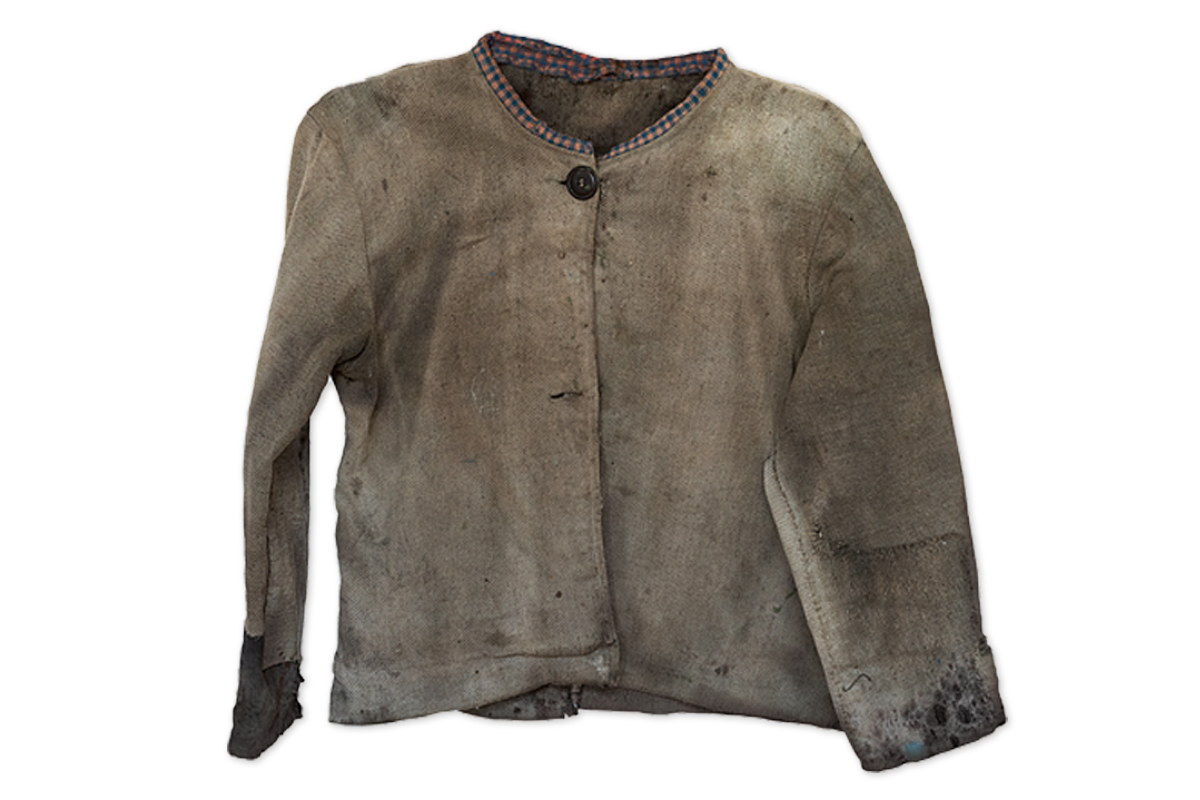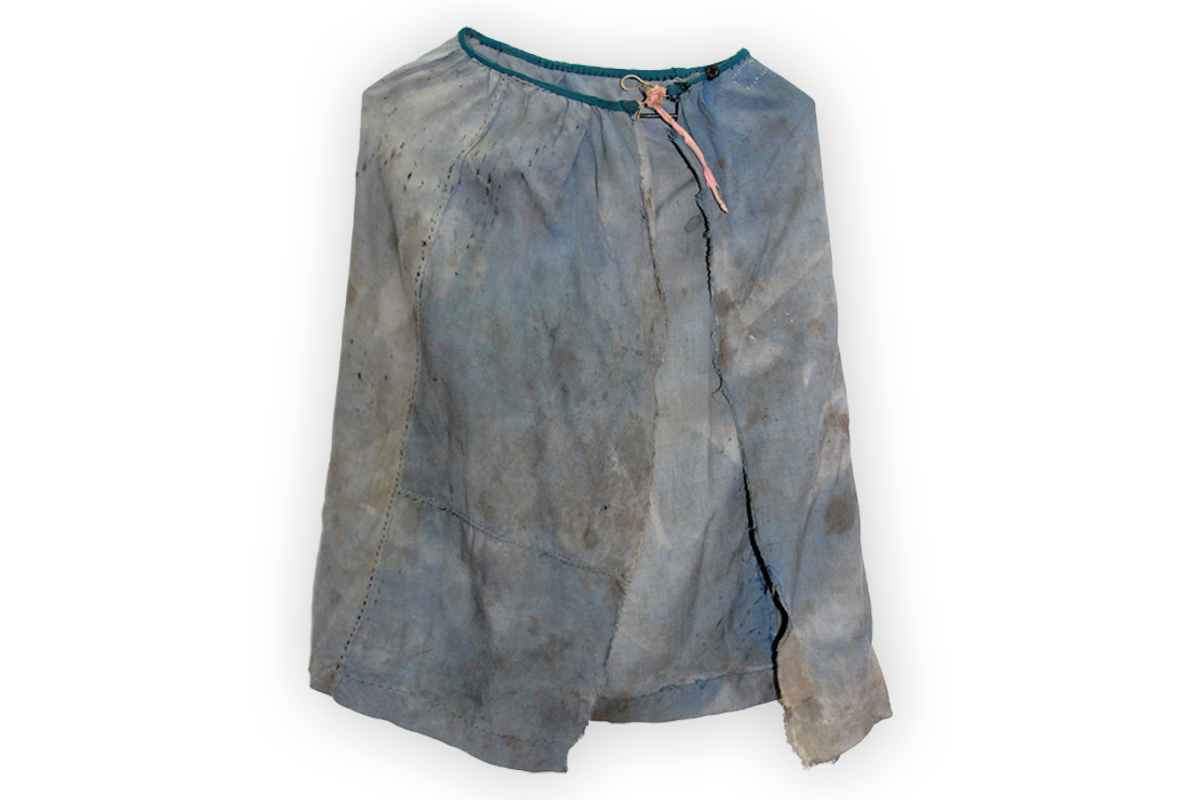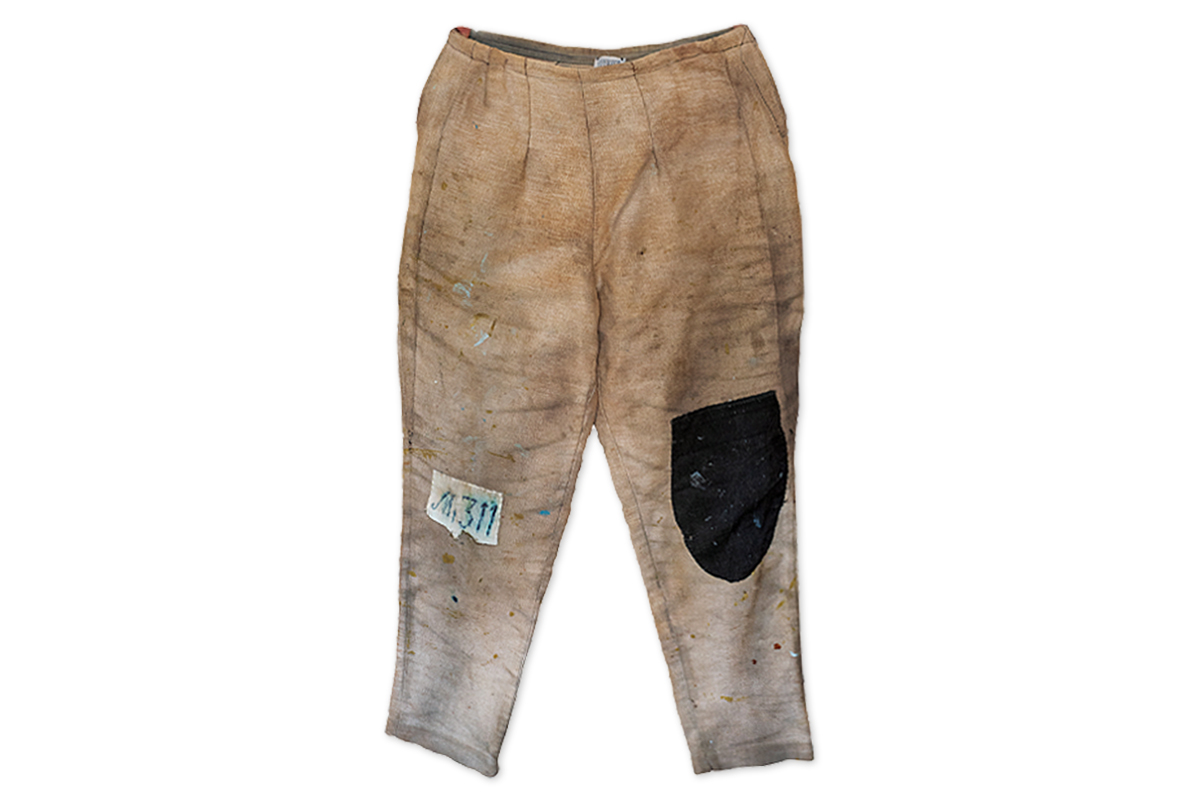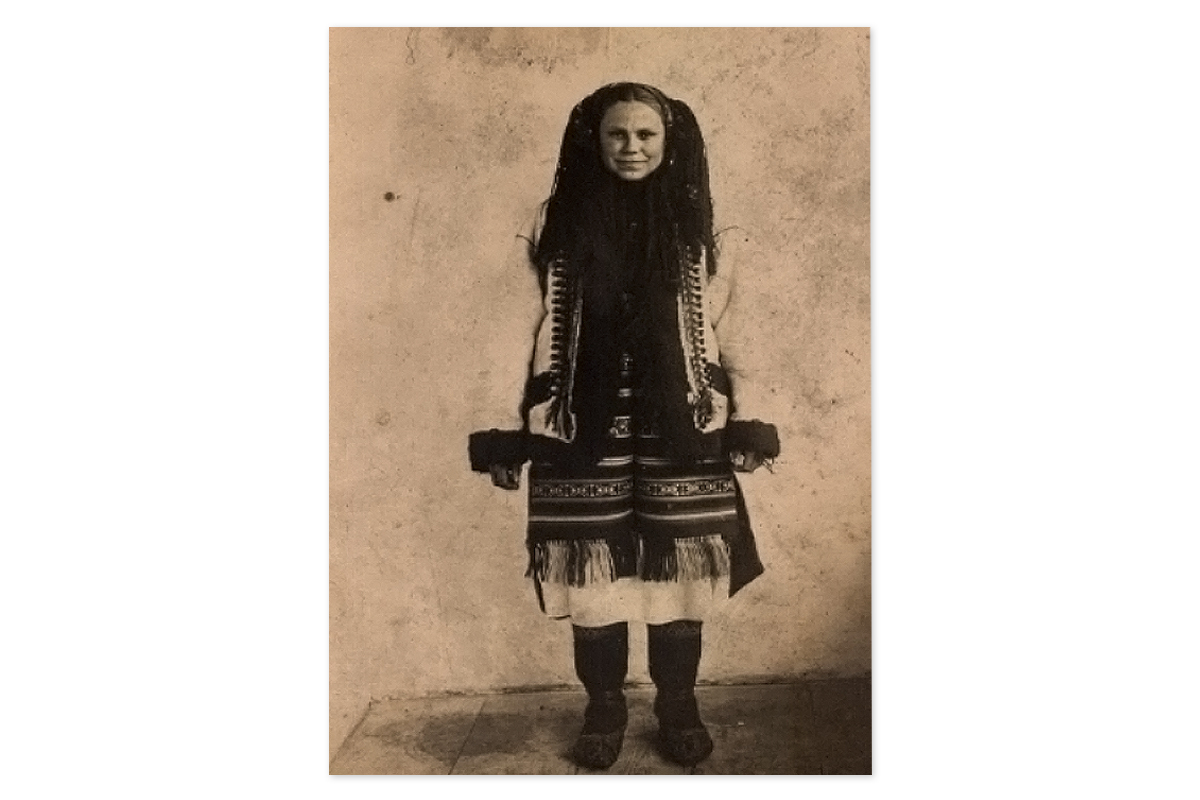In conditions of military confrontations and political disasters of 20th century the history of Ukrainian nation, which even now carries on its struggle for life, independence sovereignty, was written.
Since September 19, 2019 until February 24, 2022 the exhibition “Ukraine. Unfinished war…” worked in the Museum. In the rubric “Ukrainian memory about the Second World War”, personal materials of the political prisoner Teodoziia Plytka-Sorokhan were exhibited. From the photograph, made in 1940ies, faded to the color of sepia a young girl wearied in traditional Ukrainian Hutsul closes looking at the watcher. It is difficult to imagine, but this girl within over 10 years had to wear rough robe in Soviet camps in Kolyma. She continued to wear it even she was released from the camp, just because she had no another closings. Skirt and jacket faded, overlaundered and worn-out. Camp trousers with a patch of fabric with camp number M-311 are in a bit better condition.
The “littered” numbers were worn by prisoners of the special camp #5 “Berlag in accordance o the Council of Ministers of the USSR from February 21, 1948. It functioned during 1948 – 1954 as a part of Soviet forced labor camps for political prisoners. In 1950, normal living square for each prisoner of this camp was approximately 1.13 m2, in some departments it was 0.8 m2. Ordinary working shift reached 14 hours per day.
Teodoziia was a prisoner of the “Berlag” camp during 1949 – 1954. Before this, she was imprisoned in one of the Sevvostlag (North-Eastern Corrective Labor Camps). She had to work on the tree felling and uranium mines, overcoming until three bore pits 20-30 meters deep each winter.
Teodoziia`s native uncle Ivan Plytka was an ex-officer of the Ukrainian Sich Rifflemen, active member of the Organization of the Ukrainian Nationalists and a friend of its organizer Evhen Conovalets. No wonder that Teodoziia herself grew up conscious and patriotic Ukrainian girl.
In 1939, she entered the OUN (propaganda department). In 1944, she became a liaison, who performed intelligence for local Ukrainian Insurgent Army unit.
In March 1945, Teodoziia being at the age of 25 was arrested and sentenced to 10 years of imprisonment. Conditions of her life and work in the cam were horrible and dangerous. She lost her health but her faith became even stronger. Teodoziia saved just with praying, memories about Ukraine and embroidery — it was like a short travel to home. In Kolyma camps, she made needles of fish bones, fabric and threads she took from camp uniform — her own clothing or other prisoners.
In 1956, she returned to her native village of Kryvorivnia (Verkhovyna region, Ivano-Frankivsk area).
She worked on a collective farm, embroidered, wove, painted, collected folklore, wrote folk songs, and learned to play the guitar. Despite being under surveillance, she engaged actively in public life, including advocating to preserve the local Church of the Nativity of the Blessed Virgin Mary for its faithful.
Theodosia Plytka-Sorokhan recounted her difficult life and challenging fate in her book The Lily Unbroken in Spirit. She authored three collections of Hutsul songs: Diverse Colors of Kryvorivnia, From the Cheremosh to the Kolyma, and On the Strings of Soul and Heart (published, notably, with her own pension). On February 14, 2017, just before Candlemas, the legendary Hutsul woman passed away at the age of 95, having prepared everything for her last journey so as not to burden anyone.
Her fate, resilience, love for life, and faith in a better future for Ukraine inspire future generations to fight for their country, for their future, against the eternal enemy — Moscowia.



